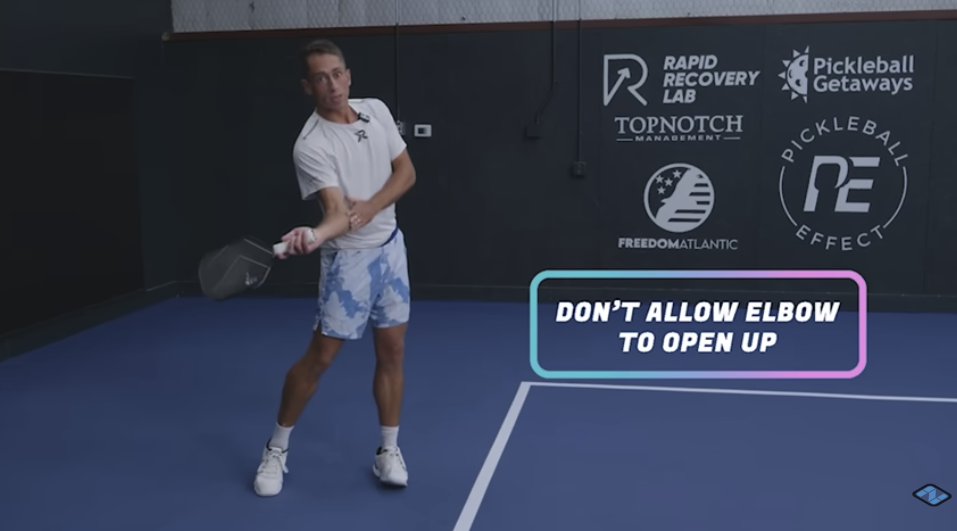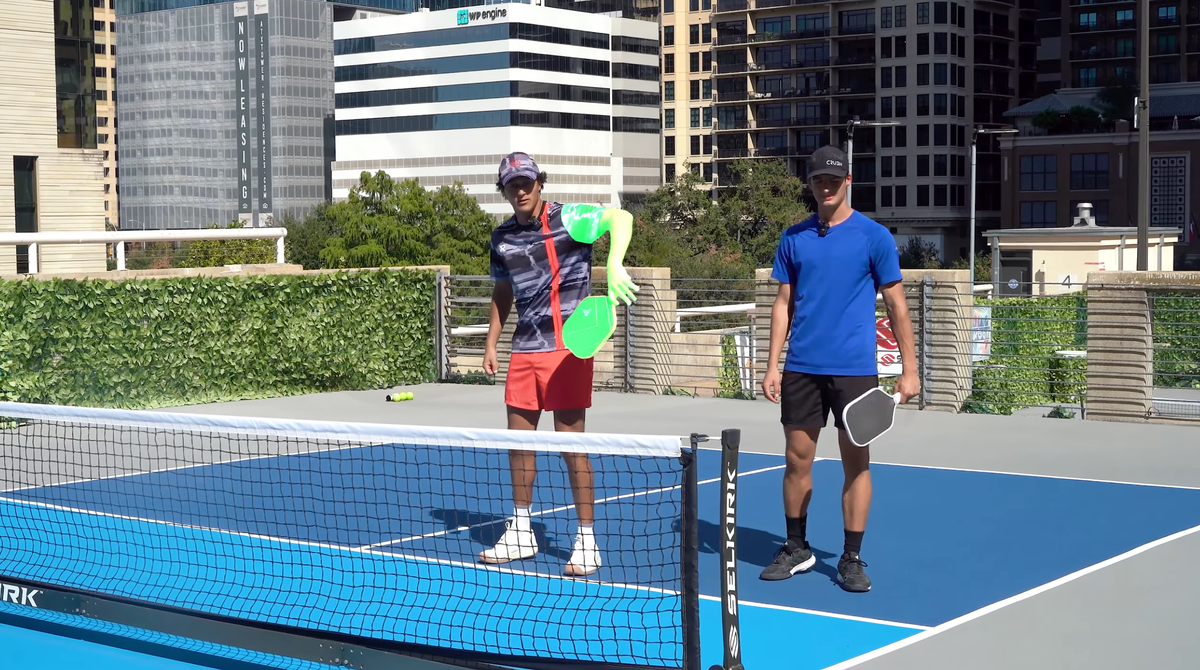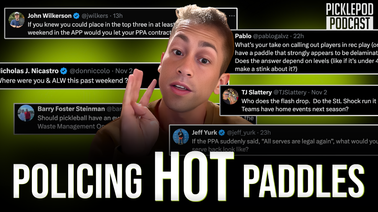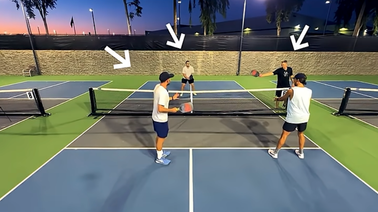
Getting to the next level isn't about one magic technique or one breakthrough moment. It's about understanding that pickleball has layers – and you've got to master them all to be great.
If you've been stuck at 4.0 or 4.5, you already know the frustration.
You're hitting better than you were last year. Your serves are cleaner. Your third shots are more consistent. Yet somehow, that 5.0 rating still feels like it's behind a velvet rope at an exclusive club you can't quite get into.
Heads up: hundreds of thousands of pickleballers read our free newsletter. Subscribe here for cutting edge strategy, insider news, pro analysis, the latest product innovations and more.
We feel you. Beaching 5.0 isn't about grinding out a thousand more hours on the court. According to a new videos from Briones Pickleball Academy, it's about mastering three specific areas that separate the good from the genuinely elite.
Pull up a chair and dial in.
1. Creating Pressure with Topspin at the Non-Volley Zone
Let's start with the dink, because that's where most rallies live.
Most players think a good dink is just about getting the ball over the net and keeping it low. That's table stakes. What separates 4.5 players from 5.0 players is the ability to create pressure while dinking, and topspin is your weapon.
- The first step is creating adequate space. Briones emphasizes this hard because it's foundational. When you create space, you create time, and time is what allows you to prepare early.
As the ball comes over the net, you're not standing still. You're moving your feet with a shuffle step, creating distance between yourself and the non-volley zone line.
This sounds simple, but most players don't do it. They're too eager to stay close to the net.
- Once you've created that space, drop your paddle head down early. Briones uses an eastern grip with a laid-back wrist, getting his paddle tip down super early.
This gives you control over your swing speed, which is crucial because you're not trying to blast the ball.
You need it to go up and then come down on the other side of the net. The motion is a straight-up swing, brushing up on the outside of the ball when you're going crosscourt.
- Now, where you place these topspin dinks matters just as much as how you hit them. Mix up middle and wide dinks to move your opponents around.
A lot of players fall into a pattern: forehand to forehand crosscourt, every single time. Predictable.
Using the middle of the court forces your opponent to stay over it longer, which makes your crosscourt dink that much more effective. Pull them wide, and suddenly the middle of the court opens up for attacking opportunities.

2. Fast and Reliable Hand Speed
As the game has gotten faster, players are driving and attacking more from the net. If you can't shut those speed-ups down with confidence, you're not reaching 5.0. This is where hand speed becomes non-negotiable.
Start with your ready position. Briones keeps his paddle right in front of his navel, slightly favored to the backhand. The key word here is relaxed. You don't want to be tight or tense. From this position, you can defend your left side, protect your body, and get to a forehand quickly if needed.

Here's a counterintuitive point: the best players in the game don't have big counter swings. They have short ones. If you're trying to counter a speed-up with a full swing, you're already too late. Instead, punch out. Then snap back to the ready position. This keeps your hands quick, fast, and reliable.
3. Mastering the Transition Zone
The transition zone is where a lot of rallies get decided, and it's also where a lot of players fall apart. Whether you hit a drive or a drop to come through the transition zone, two things matter: balance and paddle preparation.
If you're not balanced and stable, you're going to miss a lot of your resets. Come in with a really wide stance and keep your paddle in a neutral position. You know you have to protect your body and your feet, but you also need to be able to get to that forehand reset, which high-level players attack constantly. A neutral position lets you guard both sides and your feet.
Before you even think about where to place your reset, understand your goals.
- You're trying to force upward contact on your reset, which means getting the ball to bounce.
- That's ideal because it lets you advance forward with your positioning and apply pressure after your reset.
Your mindset matters too. You want to make it to the kitchen. Sometimes it takes one reset. Sometimes it takes four. Stay patient in this zone, wait for the right ball and the right opportunity, and make your way up to the line.
The Bigger Picture
Reaching 5.0 isn't about one magic technique or one breakthrough moment. It's about understanding that pickleball has layers.
- You need pressure creation at the net.
- You need quick hands in speed-up situations.
- You need to navigate the transition zone without falling apart.
Master all three, and that 5.0 rating stops feeling like a fantasy.

Love Pickleball? Join 100k+ readers for free weekly tips, news & gear deals.
Subscribe to The DinkGet 15% off pickleball gear at Midwest Raquet Sports










